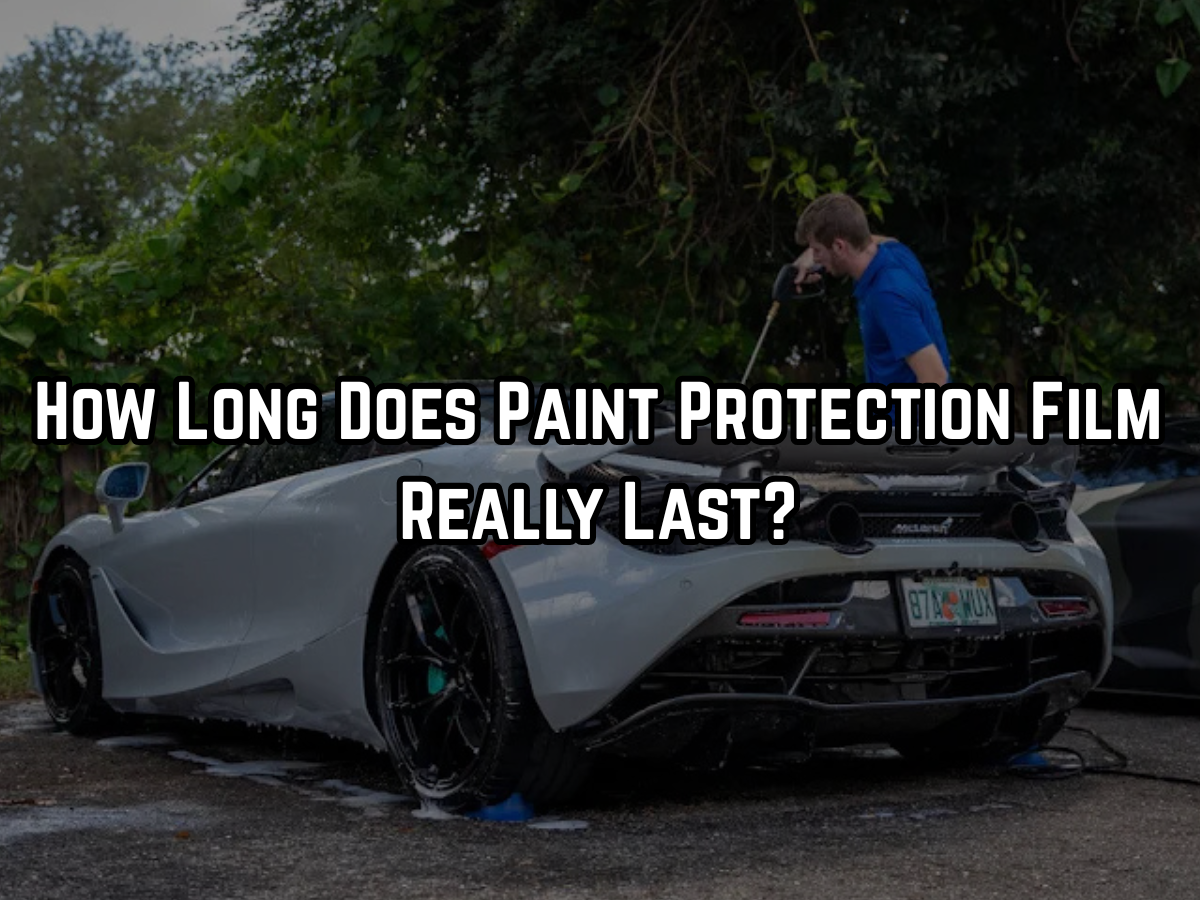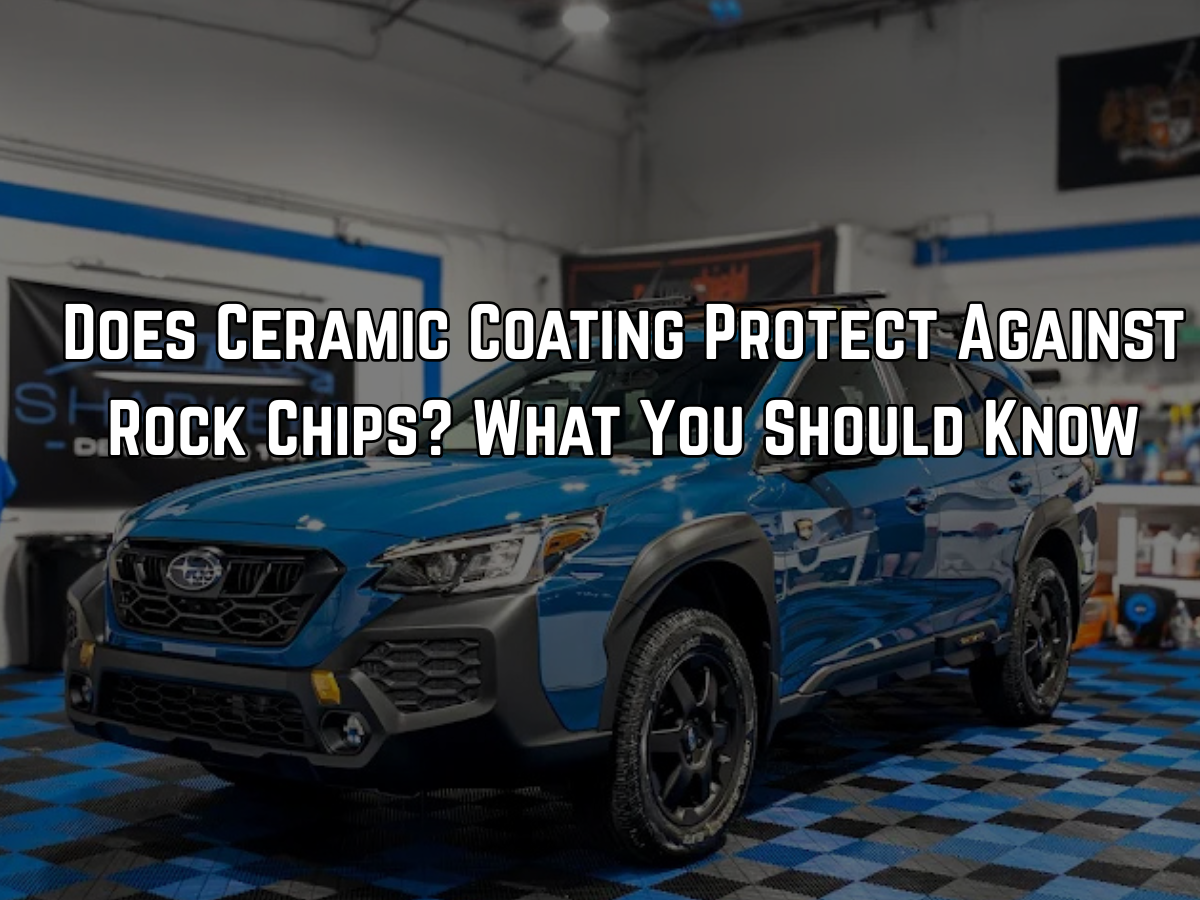How to Fix High Spots in a Ceramic Coating
High spots in ceramic coating can be fixed through several methods, depending on the coating's cure time. Fresh high spots (within hours of application) can be leveled with a microfiber cloth buffing. Partially cured high spots require mild automotive polish with a soft foam pad. Fully cured high spots need machine polishing with medium cutting compound, or in severe cases, wet sanding with 3000-grit sandpaper followed by reapplication of the coating.
Key Takeaways
- Fresh high spots can be fixed with a microfiber cloth, leveling while coating is still workable
- Mild automotive polish removes high spots in partially cured coatings
- Machine polishing with cutting compound handles fully cured high spots
- Severe cases require wet sanding with 3000-grit paper and coating reapplication
- Prevention through proper application technique beats fixing high spots after they occur
- Work in small sections and inspect immediately to catch high spots early
High spots in ceramic coating are one of the most frustrating problems detailers face. These cloudy, uneven areas appear as raised sections where excess coating wasn't properly leveled during application. Understanding how to fix them saves both time and money while preserving your coating investment.
Understanding Ceramic Coating High Spots
High spots occur when you either totally miss an area while wiping (levelling) the coating or you allow the coating to flash too long (it hardened too much for towel wiping to remove the excess and smooth out the coating). These imperfections create visible streaks, cloudiness, or rainbow-like patterns on your vehicle's surface.
The coating's curing process directly affects removal difficulty. When the coating cures, it becomes hard, and after a span of time, the hardness can't be levelled with a microfiber cloth. As the coating cures, it hardens more and more. This means timing is crucial when addressing high spots.
Common causes include rushing the application process, working in sections that are too large, inadequate lighting during application, or incorrect environmental conditions that affect the coating's flash time.
Method 1: Microfiber Cloth Leveling (Fresh High Spots)
For recently applied coatings, microfiber cloth leveling offers the simplest solution. Buff off the excess coating with a microfiber cloth. This removes any excess coating and levels the coating evenly on the surface.
This method works best when high spots are discovered within the first few hours of application. Unless the coating has already cured, this should fix the problem. Once it's cured, the surface becomes hardened and can no longer be leveled by a microfiber.
Steps for microfiber leveling:
Use a clean, lint-free microfiber towel and gently buff the affected area in straight lines. Apply minimal pressure, allowing the cloth's texture to level the excess coating. Work systematically across the high spot, checking progress frequently.
Sometimes re-applying the coating can re-emulsify the high spot so it can be leveled out. In some cases, this may level the coating without the need for further polishing. This technique works particularly well with ceramic coatings that remain workable for extended periods.
Method 2: Polish and Foam Pad Technique
For high spots that have begun curing but aren't completely hardened, mild polishing provides an effective solution. To remove ceramic coating marks, such as high spots or streaks, you can use a mild automotive polish and a soft foam pad to gently polish the affected area.
This method requires more aggressive action than microfiber leveling but remains relatively gentle on the underlying paint. The key lies in using appropriate products and techniques that remove excess coating without damaging the base layer.
Polishing technique steps:
Apply a small amount of mild automotive polish to a soft foam pad. Work the product into the high spot using circular motions with light pressure. The polishes' mild abrasives break down the excess coating while the foam pad provides even distribution.
After polishing, clean the surface with an IPA solution to remove any residue. This cleaning step removes polish residue and allows you to assess whether the high spot has been successfully eliminated.
Method 3: Hand Polish Application
A simplified approach involves using polish applied by hand with a microfiber towel. This method bridges the gap between pure microfiber leveling and machine polishing.
Gently wipe the polished side of the towel over the high spot. Try to keep the towel as flat on the surface as you can when you wipe. Do not put a lot of pressure on the towel. We want the abrasiveness of the polish to do the work, not pressure on the surface.
The technique requires patience and proper execution. After about 5-10 seconds of wiping, check your progress and repeat as necessary. This method works particularly well for small, localized high spots that don't require aggressive correction.
Method 4: Machine Polishing for Stubborn High Spots
Fully cured high spots require machine polishing with appropriate compounds and pads. This method provides the mechanical action needed to remove hardened ceramic coating.
Use a random orbital polisher equipped with a medium cutting pad and medium to light polishing compound. Apply an appropriate amount of compound to the pad, following the product's description. Dab the surface several times to spread the compound.
Machine polishing procedure:
Set the polisher to medium speed and work the compound into the high spot using overlapping passes. Maintain consistent pressure and speed to ensure even correction. Monitor progress frequently to avoid over-correction that might damage the underlying coating or paint.
The goal is removing excess coating material while preserving the base ceramic layer. This requires careful balance between aggressive enough correction and gentle enough technique to avoid coating damage.
Method 5: Wet Sanding for Severe Cases
Extremely high spots that resist polishing may require wet sanding before reapplication. This represents the most aggressive correction method and should be used carefully.
Use fine sandpaper and a fair amount of lubricant on the surface. Start with 3000 grit and, if necessary, move down to a more aggressive grit until you see the ceramic coating wearing off. Exercise extreme caution to avoid cutting through the ceramic coating into the paint's clear coat.
Wet sanding technique:
Keep the surface well-lubricated with water or an appropriate lubricant. Use light, even pressure with the sandpaper, working in straight lines rather than circular motions. Check progress frequently to avoid over-sanding.
Just be careful not to eat into the clear coat. After all the high spots are addressed, the rest of the process is the same as polishing an uncoated vehicle. This method requires the reapplication of ceramic coating to the sanded areas.
Progressive Correction Approach
The most effective strategy involves trying methods in order of increasing aggressiveness. Start with the gentlest approach that might work and progress to more aggressive methods only if necessary.
The first thing you can try is to level the coating with a microfiber cloth. This will usually only work if the coating was applied a very short time ago. If microfiber leveling fails, progress to polish application, then machine polishing, and finally wet sanding if required.
This progressive approach minimizes the risk of over-correction while maximizing the chances of successful high spot removal. Each method builds on the previous one's foundation while increasing correction capability.
Correction Method Comparison
| Method | Best For | Time Since Application | Risk Level | Success Rate |
|---|---|---|---|---|
| Microfiber Leveling | Fresh high spots | 0-4 hours | Very Low | High |
| Hand Polish | Partially cured spots | 4-24 hours | Low | Medium-High |
| Machine Polish | Cured high spots | 1+ days | Medium | High |
| Wet Sanding | Severe/stubborn spots | Hill | High | Very High |
Prevention Strategies
Preventing high spots proves more efficient than fixing them after they occur. Work on small sections, one at a time of any vehicle you are coating. Working in planned small sections reduces the likelihood of missing areas or allowing sections to flash too long.
Proper lighting during application helps identify high spots before they cure completely. Use multiple light sources from different angles to reveal surface imperfections that might not be visible under single-point lighting.
Environmental control also plays a crucial role. High temperatures and low humidity accelerate flash times, making high spots more likely. Work in shaded areas with appropriate temperature and humidity levels for optimal application conditions.
Professional vs DIY Approach
In this example, I was able to remove a high spot that had fully dried and cured after a couple of weeks using nothing but a high-quality one-step cleaner/wax by hand. This demonstrates that even challenging high spots can sometimes be corrected with simple products and techniques.
However, severe cases may require professional intervention. Professionals have access to specialized equipment, products, and experience that can handle difficult corrections without risking paint damage.
Consider professional help when high spots cover large areas, when multiple correction attempts have failed, or when you're uncomfortable with the risk of paint damage from aggressive correction methods.
Post-Correction Steps
After successfully removing high spots, the affected area often requires coating reapplication. Apply the ceramic paint coating originally used following the manufacturer's directions. Wait the recommended time and then buff the section with a clean microfiber towel, and then INSPECT for high spots.
Proper inspection after correction prevents recurring problems. Use appropriate lighting and viewing angles to ensure complete high spot removal before considering the job complete.
The corrected area should blend seamlessly with the surrounding coated surfaces. Any visible boundaries or differences in gloss level indicate incomplete correction or the need for additional treatment.
Conclusion
Fixing high spots in ceramic coating requires understanding the coating's curing stage and selecting appropriate correction methods. Fresh high spots respond well to simple microfiber leveling, while cured imperfections need progressively more aggressive approaches, including polishing or wet sanding.
The key to successful high spot correction lies in proper assessment, appropriate method selection, and careful execution. Prevention through proper application technique remains the best strategy, but when high spots do occur, systematic correction methods can restore your coating's appearance and performance.
Remember that patience and proper technique produce better results than rushing through correction attempts. Take time to assess each high spot individually and choose the gentlest effective method to minimize risks while achieving optimal results.




